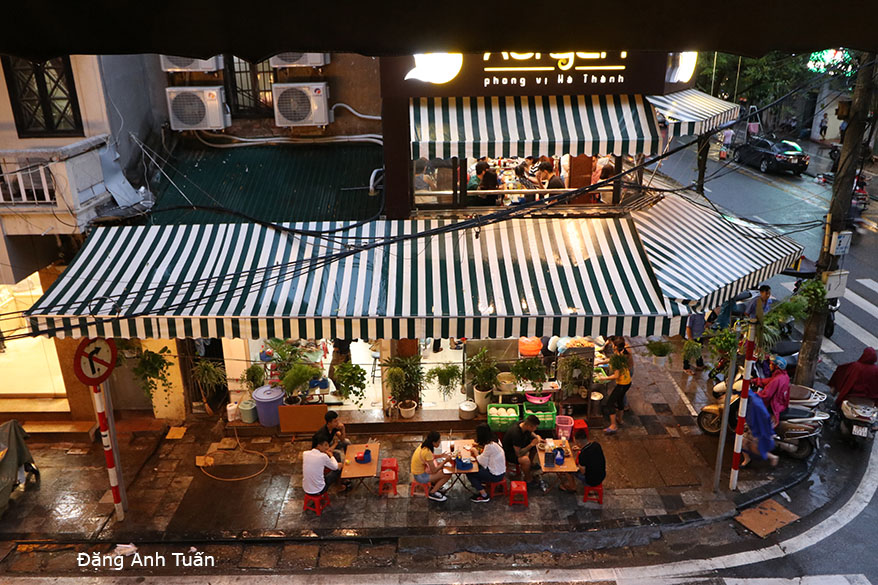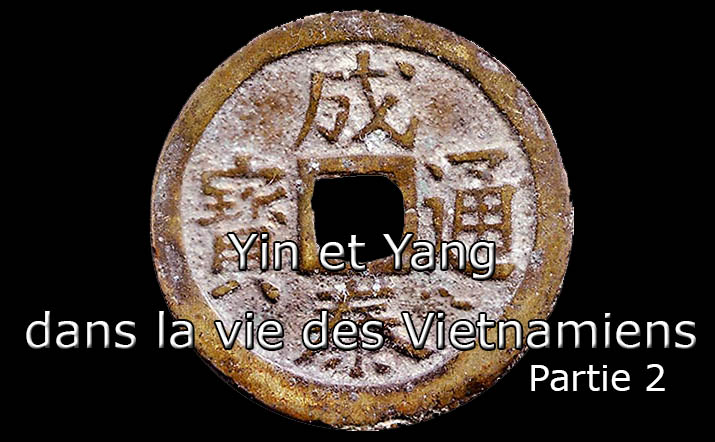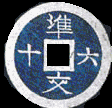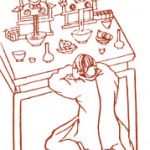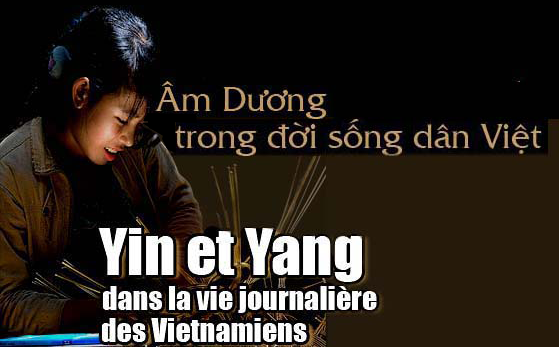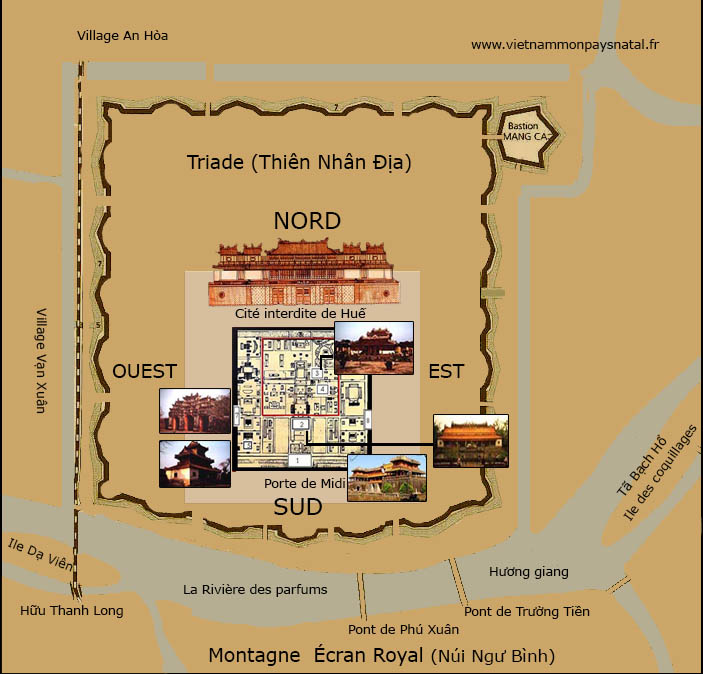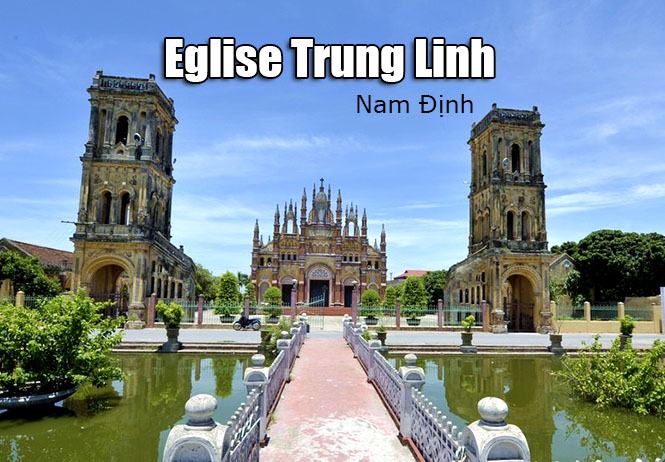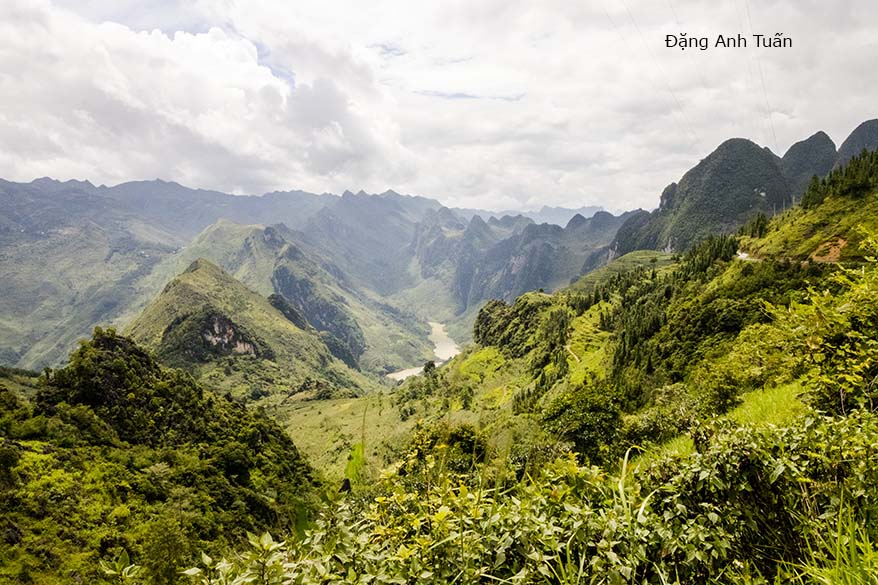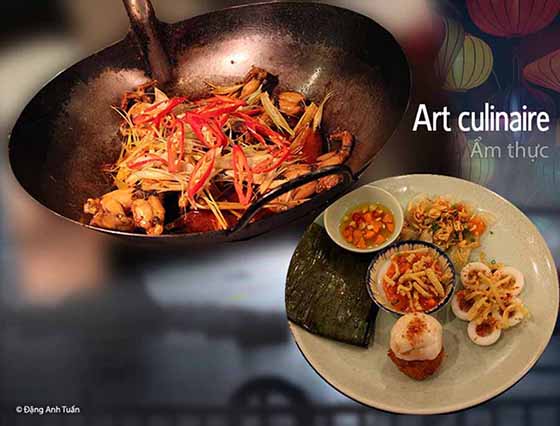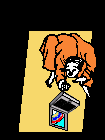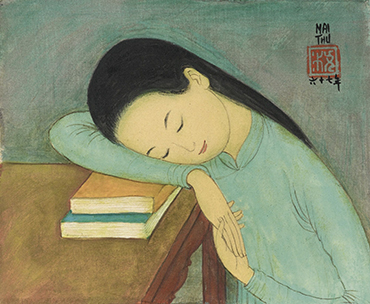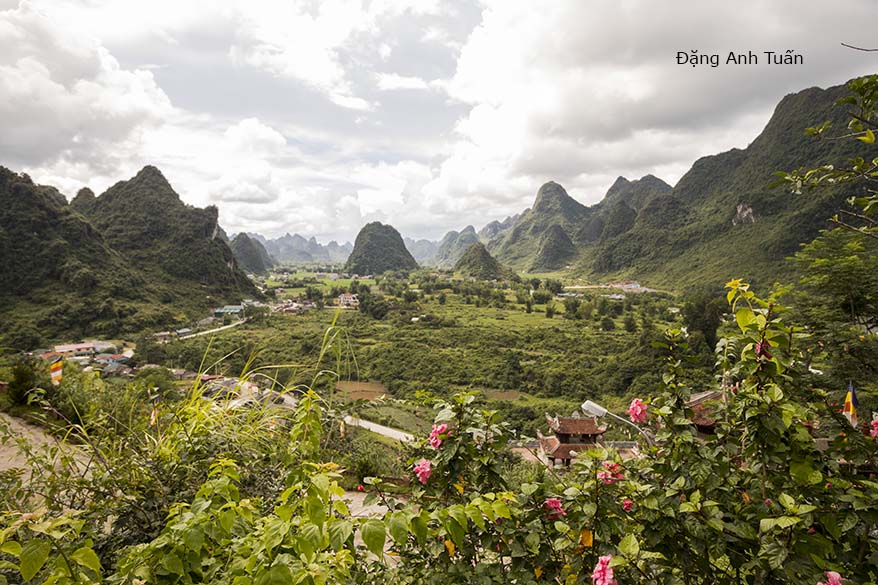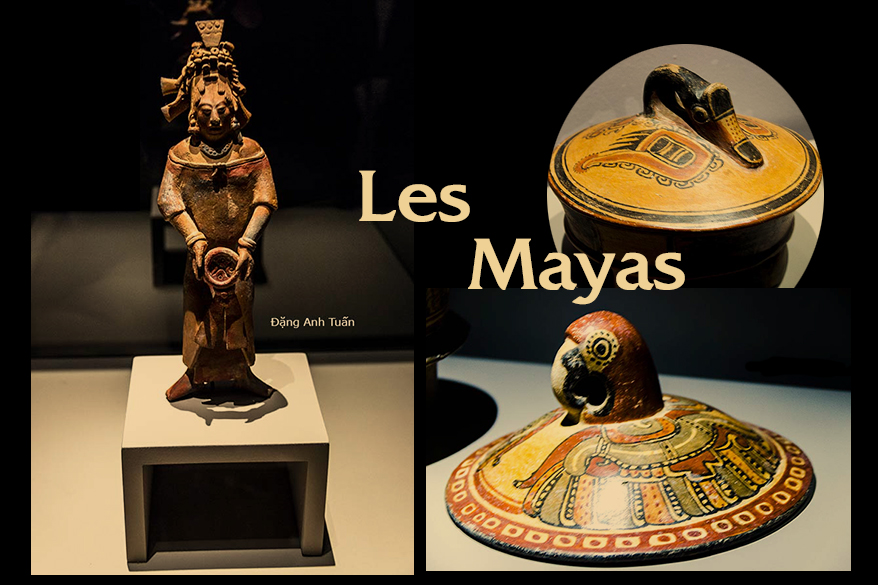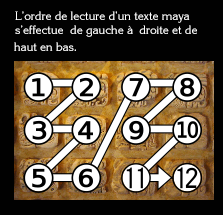Version française
English version
Galerie des photos
Bao lần đến Hànội thỉ mình vẫn thích ở phố cổ. Phố nầy có thời kì phong kiến thường gọi lả khu phố buôn bán hay kẻ chợ để ám chỉ những người của chợ. Khu phố nầy tuy nó có diện tích 82 ha quá nhỏ nhưng nó rất sống động. Nó là linh hồn của Hà Thành vì nó thể hiện được bằng ký ức và cảm xúc qua cuộc sống hằng ngày của người Hà Thành. Từ sáng đến tối, lúc nào cũng có người ngoài đường nhưng tùy giờ mà nhịp sống nó thay đổi. Chính mình cũng cảm nhận được sự kiện nầy khiến mình rất thích thú, không chán mà còn nhận ở nơi nầy có nhiều chuyện học hỏi, những tập quán mà không còn thấy ở những đô thị khác ở Việt Nam và cũng có nhiều nơi để mình tham quan và lưu niệm qua máy ảnh như nhà cổ Mã Mây, cầu Long Biên, cửa Ô Quan Chưởng, đền Quán Thánh vân vân… Nhà văn Thạch Lam đã từng nói đến Hànội băm sáu phố phường qua cái ăn uống của người Hà Thành.
Khu phố cổ nầy nó là hiện thân của nền văn hóa thương mại và đô thị của Viêtnam đã có hơn nghìn năm. Nó còn minh chứng cho quá trình tiến triển của Hà Thành trong những năm gần đây. Mỗi giờ luợng người qua lại thay đổi. Sáng cở 5 giờ ở các đường nhất là ở phố Cầu Gỗ, các người bán rong hay bán hoa thường tựu về đây để họ trang trí lại hoa quả theo mùa và theo ý muốn của họ. Đây là một trong những nét đẹp của phố cổ. Bao lần đến ở phố cổ thì mình cũng mất ít nhất một buổi sáng sớm cùng các du khách ngọai quốc đeo đuổi một cách kính đáo các người bán rong nầy để chụp ảnh. Vừa tội nghiệp cuộc sóng bon chen của họ mà cũng vừa thích thú khi chụp được các bó bông, các trái cây họ kết hợp bày trưng một cách khéo léo khiến làm màu sắc rực rỡ và làm tăng thêm cái vẻ đẹp của các thực phẩm họ muốn bán. Sau đó dọc theo bờ Hồ Hoàn Kiếm lối 6, 7 giờ thì có các nguời chạy bộ thư giãn, các đoàn thể cùng nhau tập thể dục theo nhạc hay tài chi. Còn trước các tiệm buôn bán, bày ra la liệt trên vĩa hè các thúng rau cải xanh, trái cây hay các thịt sống. Đây cũng là một lối buôn bán nầy chắc có từ lâu vì thiếu chợ ở xung quanh. Có luôn cả các nguời bán rong thức ăn (bánh cuốn Thanh Trì, nem rán, xôi, phở bò hay cả phê vân vân…).
Nhưng cở 10 giờ trở đi thì các trò buôn bán nẩy không còn nửa nhường vĩa hè lại cho các tiệm buôn trong ngày. Đường xá cũng không ngừng tiếng kèn, người qua lại cũng đông, các quán cà phê cũng bất đầu có người và du khách. Khi trời không mưa, có thể đi bộ tử phố nầy sang phố khác, mỗi phố có nghề nghiệp riêng biệt: Hàng Đào với các khăn quang cổ bằng tơ lụa đủ màu, Hàng thuốc bắc với mùi hương của các loại thảo, Hàng Mã thì bán đồ trang trí bằng giấy để cho công việc cúng lễ nhưng cũng có phố chỉ còn cò tên chớ không còn nghề bán riêng biệt như Hàng Bè nơi mình ở. Thưở xưa, nơi nầy có chợ ở trên con đê bán các bè gỗ. Muốn đi bộ thư thản như mình cũng mất ít nhất 2, 3 tiếng vỉ mình vừa đi vừa chụp hình. Nhưng không thể đi lâu hơn được càng về trưa càng nóng không thể tưởng tượng nhất it khi có gió lắm nhưng khi có gió bấc mủa đông thì nó lạnh thấu xuơng không thua chi ở Paris. Ở phố cổ, ăn chi cũng có nhưng tùy giá mình muốn trả mà thôi.
Có một lần ngồi ăn bún chả Hànội ở vĩa hè chỉ có tốn 25 ngàn đồng nhưng ăn không được vì chả nó bị cháy đóng mỡ. Còn đến tiệm ăn nổi tiếng cùng món ăn đó thì phải trả 110 ngàn đồng. Còn ăn cá rán dầm nước mắm với xoài hay thịt kho nước dừa, món của miền nam thỉ rất khó tìm lắm nhưng khi tìm được rồi, mình cứ đến nơi đó ăn vài lần vì mới biết người bếp từ Saigon ra đây sinh sống nấu ăn. Vị ăn của người Bắc quá mặn còn vị của người Nam quá ngọt biết bao giờ thống nhất được các vị nầy chắc chắn vị nó sẻ đậm đà cho Quê Hương …Trưa lại lại có thể ra bờ hồ Hoàn Kiếm hứng gió như đôi tình nhân hay nghỉ mát như các du khách ngoại quốc. Nếu thích thì có thể đi tham quan các bảo tàng nổi tiếng như bảo tàng dân tộc học, bảo tàng lịch sử vân vân … hay đi xem múa rối nước hoăc đến các quán cà phê via hè lúc nào cũng tấp nập người. Chiều tối, có các trò biểu diển ngoài trời (ca nhạc, hát chèo vân vân ..) nếu cuối tuần thì có khu đi bộ, có chợ đêm rất náo nhiệt. Có ở Phố cổ bao nhiêu lần như mình khó mà không có kỷ niệm, khó mà quên đựợc cái đẹp cá biệt của nó dù biết rằng cuộc sống ở đây rất bon chen với thời gian và không gian cùng các ngôi nhà sâu và hẹp san sát nhau (nhà ống).
En venant à Hanoï tant de fois, je continue à aimer son vieux faubourg et préférer d’y séjourner. Son existence date de l’époque féodale. On a l’habitude de l’appeler sous le nom de « quartier marchand » ou « kẻ chợ » pour faire allusion à tous ceux qui y vivent. Malgré sa très petite superficie de 82 ha, ce quartier est très animé. Il est l’âme de Hanoï car il réussit à incarner souvenances et émotions passées dans la vie quotidienne des Hanoïens. Du matin jusqu’au soir, le nombre de gens ne cesse de varier dans les rues mais en fonction du créneau horaire, le rythme de vie change dont je m’aperçois également. C’est pourquoi je suis tellement satisfait sans me lasser car c’est ici que j’apprend à découvrir un tas de choses, des traditions que je ne trouve plus ailleurs dans les autres villes du Vietnam. C’est aussi ici que je peux flâner agréablement, ressentir la richesse visuelle du faubourg et photographier des lieux historiques tels que l’ancienne maison Mã Mây, le pont Long Biên (ancien pont Paul Doumer), la porte Ô Quan Chưởng, le temple Quán Thánh etc. Le célèbre romancier Thạch Lam a l’occasion d’évoquer ce faubourg à 36 rues à travers la cuisine vietnamienne. Ce vieux quartier témoigne depuis plus de 1000 ans de la culture commerciale et urbaine de la civilisation vietnamienne et de son évolution jusqu’à aujourd’hui. Le va-et-vient des gens varie incessamment d’heure en heure au cours de la journée. Vers 5 heures du matin dans les rues du quartier, en particulier dans la rue Cầu Gỗ, les marchandes ambulantes ou les fleuristes se regroupent pour mettre en valeur leurs produits à vendre (fleurs et fruits) en fonction de la saison et à leur guise.
C’est l’un des attraits de ce vieux quartier. Comme les touristes étrangers, je suis obligé de consacrer au moins une matinée pour poursuivre ces marchandes. Bien que je sois soucieux d’éviter de les gêner dans leur vie difficile et de les photographier de loin avec discrétion, je retrouve parfois la satisfaction d’avoir de belles photos avec leurs bouquets de fleurs fraîches (ou fruits) aux couleurs vives et éclatantes. Puis, vers 6 ou 7 heures, tout le long du lac de l’épée restituée (Hồ Hoàn Kiếm), on voit les uns faire du jogging ou de la danse aérobique en groupe et les autres du Tai Chi. Devant les façades des boutiques de commerce, on voit s’étaler sur le trottoir une grande variété de légumes et d’herbes soigneusement sélectionnés ou de la viande fraîche. C’est une méthode de vente datant peut-être depuis longtemps car je ne trouve aucun marché aux alentours. D’autres vendeuses de rue occupent aussi le trottoir et proposent des spécialités culinaires de Hanoi (galettes Thanh Trì, nems, riz gluant, soupe au bœuf et aux nouilles de riz ou café etc.).
Aux alentours de 10 heures, toutes ces activités de commerce alimentaire disparaissent et cèdent la place aux boutiques ayant pignon sur rue dans la journée. Le klaxon des motos ne cesse pas de retentir. Le va-et-vient des gens commence à gêner la circulation. Les gargotes de café se remplissent progressivement. Au cas où il fait beau, il est possible de marcher à pied et de flâner d’une rue à une autre car chaque rue a sa spécialité: rue de la soie aux écharpes multicolores, rue des médicaments au parfum d’herbes aromatiques, rue des papiers et objets votifs pour les temples et les âmes errantes etc. mais il y a aussi les rues portant les noms d’autrefois et n’ayant aucun rapport avec les produits proposés à vendre aujourd’hui. C’est le cas de la rue Hàng Bè où se trouve mon hôtel. Autrefois c’est ici qu’il y avait un marché sur une digue où on vendait les radeaux en bois. Pour flâner dans tous les coins des rues comme moi, il faut compter au moins 2 ou 3 heures car j’ai besoin de faire la photo tout en observant tout ce qui se passe dans la rue. Mais il est impossible de faire longtemps la marche à pied car il fait tellement chaud surtout à midi en été. Par contre, on peut être transi de froid avec le vent glacial venant du nord comme celui de Paris en hiver.
Dans ce faubourg, le prix de la bouffe varie d’une gargote à une autre. Dans l’après-midi, on peut se détendre au lac Hồ Hoàn Kiếm ou aller visiter les musées célèbres comme le musée d’ethnographie du Vietnam, le musée de l’histoire de Hanoï, le musée des beaux-arts etc. ou aller voir l’art scénique des marionnettes sur eau ou fréquenter les gargotes du café pour retrouver l’ambiance d’autrefois. Le soir, les spectacles (musique, théâtre etc…) ont lieu en plein air autour du lac. En fin de la semaine, il y a des rues interdites pour la circulation et réservées pour les piétons ainsi que le marché de nuit où tous les produits locaux et artisanaux sont proposés avec des prix variables. Il est difficile pour quelqu’un comme moi de ne pas avoir des souvenirs et d’oublier le charmant trait caractéristique de ce faubourg bien qu’on sache que la vie journalière de ses habitants est difficile non seulement au niveau temporel mais aussi au niveau spatial avec leurs maisons tubulaires et adossées étroitement les unes des autres.
Coming to Hanoi so many times, I continue to love its old suburb and prefer to stay there. Its existence dates back to the feudal era. It is usually called the « merchant district » or « kẻ chợ » to refer to all those who live there. Despite its very small area of 82 ha, this district is very lively. It is the soul of Hanoi because it succeeds in embodying past memories and emotions in the daily life of Hanoians. From morning to evening, the number of people keeps varying in the streets but depending on the time slot, the rhythm of life changes which I also notice. That is why I am so satisfied without getting tired because it is here that I learn to discover a lot of things, traditions that I no longer find elsewhere in other cities in Vietnam. It is also here that I can stroll pleasantly, feel the visual richness of the suburb and photograph historical places such as the old Mã Mây house, Long Biên Bridge (former Paul Doumer Bridge), Ô Quan Chưởng Gate, Quán Thánh Temple etc. The famous novelist Thạch Lam has the opportunity to evoke this suburb with 36 streets through Vietnamese cuisine. This old quarter has been a testament to the commercial and urban culture of Vietnamese civilization for more than 1000 years and its evolution until today. The coming and going of people varies incessantly from hour to hour during the day. Around 5 a.m. in the streets of the neighborhood, especially on Cầu Gỗ Street, street vendors or florists gather to showcase their products for sale (flowers and fruits) according to the season and as they wish.
This is one of the attractions of this old quarter. Like foreign tourists, I’m obliged to devote at least a morning to pursuing these merchants. Although I’m careful to avoid disturbing them in their difficult lives, and to photograph them discreetly from a distance, I sometimes find the satisfaction of having beautiful photos with their brightly colored bouquets of fresh flowers (or fruit). Then, at around 6 or 7 o’clock, all along the Lake of the Restored Sword (Hò Hoàn Kiếm), we see some people jogging or doing aerobic dance in groups, and others practicing Tai Chi. In front of the store fronts, you’ll see a wide variety of carefully selected vegetables and herbs, or fresh meat, spread out on the sidewalk. This may be a long-established method of selling, as I can’t find any markets in the vicinity. Other street vendors also occupy the sidewalk, selling Hanoi’s culinary specialties (Thanh Trì pancakes, egg rolls, sticky rice, beef and rice noodle soup or coffee etc.).
Around 10 a.m., all these food trading activities disappear and give way to the stores that are open during the day. The horns of motorcycles blare incessantly. The comings and goings of people begin to impede traffic flow. The coffee shops are gradually filling up. If the weather is fine, it’s possible to walk and stroll from one street to the next, as each street has its own specialty: silk street with its multicolored scarves, medicine street with its fragrant herbs, paper street and votive objects for temples and wandering souls, etc. But there are also streets with names from yesteryear that have nothing to do with the products on sale today. Such is the case of rue Hàng Bè, where my hotel is located. In the past, there was a market here on a dike where wooden rafts were sold. To stroll around every corner like I do, you need at least 2 or 3 hours, as I need to take photos while observing everything that’s going on in the street. But it’s impossible to walk for long because it’s so hot, especially at midday in summer. On the other hand, you can freeze to death in the icy north wind, like the one blowing from Paris in winter.
In this suburb, the price of food varies from one gargote to another. In the afternoon, you can relax at Lake Hồ Hoàn Kiếm or visit famous museums such as the Museum of Vietnamese Ethnography, the Hanoi History Museum, the Fine Arts Museum, etc., or see the scenic art of water puppetry, or frequent the café gargotes to recapture the atmosphere of yesteryear. In the evenings, there are open-air shows (music, theater, etc.) around the lake. At the end of the week, there are streets closed to traffic and reserved for pedestrians, as well as the night market where all kinds of local products and crafts are on offer at varying prices. It’s hard for someone like me not to remember and forget the charming characteristic of this suburb, even though we know that the daily life of its inhabitants is difficult not only temporally but also spatially, with their closely-spaced, tubular houses.

